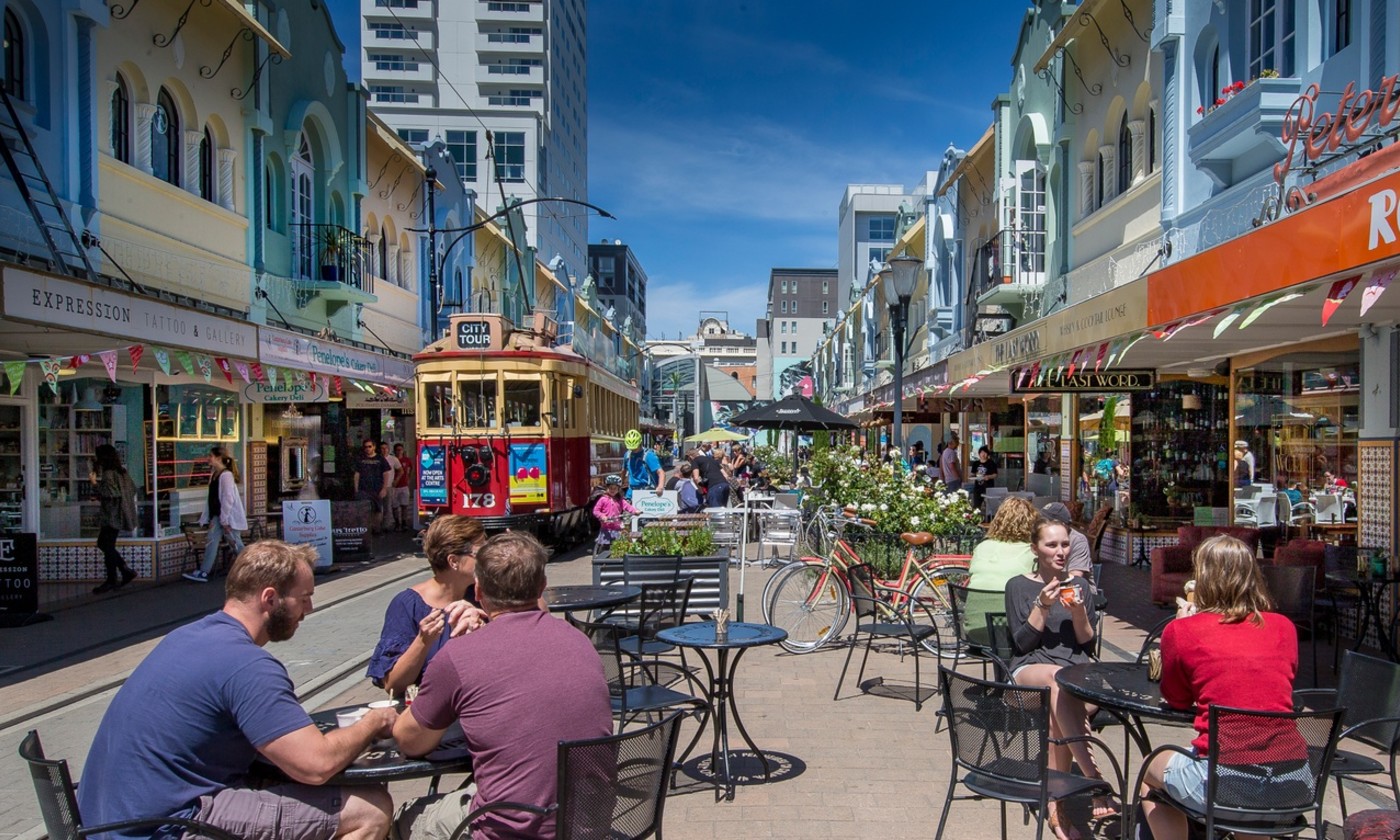For 28 years our focus has always been on enriching the way people live, work and play through architecture.
Style
Connection To Our Cultural Heritage
December 2018

With the holiday season upon us, it’s a time when people return home to visit friends and family – but what creates this feeling of ‘home’ in our cities?
‘Home’ can be a feeling of connection to our local cultural heritage, so in this issue I look at some of Christchurch’s older structures that could have been lost in the earthquakes, but have been repaired – New Regent Street, the Bridge of Remembrance and the Christchurch Town Hall. These are places where many Cantabrians born pre-earthquake have visited and created memories, leading to a feeling of Christchurch city as home.
New Regent Street
New Regent Street was one of only a few large projects completed in the South Island during the great depression. The Spanish Mission style pastel coloured terrace buildings were unique at the time when most streetscapes were a mix of heights and styles. Designed in 1932 it was (and probably still is) New Zealand’s only street designed in a uniform style.
Originally the site was a circus paddock that was transformed into a huge roller skating rink in 1888. The ‘Colosseum’ was later used as a boot factory, an ice rink, and Christchurch’s first picture theatre.
The forty, two-storey buildings were designed by Francis Willis and opened on 1 April 1932. Only three shops were let at the time because of the economy, but the pastel colours were considered to be a sign of optimism.
In 1994 the road was turned into a pedestrian mall in preparation for the tram to start operating the following year.
Following the earthquakes it was the only completely remaining heritage streetscape. It was bought up to 69% of the new building code, with structural steel, reinforced concrete walls added and a new continuous concrete raft foundation. It was reopened in 2013.
Today it is still a lively place of entertainment, where people continue to enjoy the various shops, restaurants and bars, and catch the Tram.

Bridge of Remembrance and Memorial Arch
A monument important to the people of the region is the Bridge of Remembrance and Memorial Arch. Designed by Prouse and Gummer and built in 1924, it commemorates the soldiers of Canterbury who fought during World War I, and the New Zealanders who fought and died in the following wars.
The bridge is built on the site where all soldiers from Canterbury passed as they marched off to war and is inscribed with Quid non pro patria ‘What will a man not do for his country’.
It is constructed of concrete faced sandstone, and was converted to a pedestrian bridge in 1976.
As well as its historic and cultural significance, the arch structures also provide an important landmark in our central city.
The arches were technically challenging to repair and involved 3D modelling and laser surveying. The seismic strengthening and 27m deep piles will protect it if another large earthquake was to occur.
The Bridge of Remembrance re-opened on Anzac Day 2016. It will continue to be a place where people can honour the defence force personnel who made the ultimate sacrifice.

Christchurch Town Hall
The Christchurch Town Hall is one of the places many Cantabrians have been to, whether it was for a school performance or graduation, a concert, wedding reception, or just dinner at the old Boat Restaurant.
Before the Warren and Mahoney building opened in 1972, Christchurch was in fact without a Town Hall for 99 years. The first two town halls located side by side in the central city were gutted by fire in 1873.
The modernist design was the winner of an architectural competition, and the floor plan is so simple it could be sketched in ten seconds.
From the main entry off Kilmore Street you turn right for the auditorium (previously described as ‘Christchurch’s living room’), left for the James Hay Theatre, and straight on for the function rooms and restaurant. Easy!
The exterior form of the building follows the function of the spaces within, unlike the Sydney Opera House constructed at a similar time (to a much larger budget) where the form is more sculptural and poetic.
Fortunately, the main spaces are being restored, while the river side is being partially rebuilt. A new building on the western side will house the V Base offices and Christchurch Symphony Orchestra.
The repair work also consists of restoration of a number of features including the 50 large panels of Pat Hanly's 1971 artwork Rainbow Pieces, and also improves the acoustics in the James Hay Theatre and staging technology.
On completion the building will meet 100% of the building code. It reopens next year on 1 March.
Each of these structures has a past. They tell a story of experiences, and together they join with our collective memory of the city and help to inform our perception and feeling of ‘home’.
Style.co.nz
Page 40